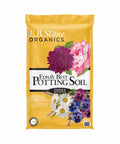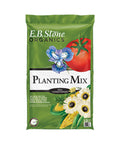Details
Spanish Lavender is a dense multi-stemmed evergreen shrub with a mounded form. It lends an extremely fine and delicate texture to the landscape composition which should be used to full effect.
This is a relatively low maintenance shrub, and can be pruned at anytime. It is a good choice for attracting bees and butterflies to your yard, but is not particularly attractive to deer who tend to leave it alone in favor of tastier treats. It has no significant negative characteristics.
Spanish Lavender is recommended for the following landscape applications:
- Mass Planting
- Rock/Alpine Gardens
- Border Edging
- General Garden Use
- Container Planting
Features
Spanish Lavender has masses of beautiful spikes of fragrant deep purple flowers rising above the foliage from early to late summer, which are most effective when planted in groupings. The flowers are excellent for cutting. It has attractive grayish green foliage. The fragrant needles are highly ornamental and turn coppery-bronze in fall. The fruit is not ornamentally significant.
Planting & Growing
Spanish Lavender will grow to be about 24 inches tall at maturity extending to 3 feet tall with the flowers, with a spread of 24 inches. It tends to fill out right to the ground and therefore doesn't necessarily require facer plants in front. It grows at a slow rate, and under ideal conditions can be expected to live for approximately 10 years.
This shrub should only be grown in full sunlight. It prefers dry to average moisture levels with very well-drained soil, and will often die in standing water. It is considered to be drought-tolerant, and thus makes an ideal choice for a low-water garden or xeriscape application. It is not particular as to soil type, but has a definite preference for alkaline soils, and is able to handle environmental salt. It is highly tolerant of urban pollution and will even thrive in inner city environments. This species is not originally from North America.
Spanish Lavender makes a fine choice for the outdoor landscape, but it is also well-suited for use in outdoor pots and containers. Because of its height, it is often used as a 'thriller' in the 'spiller-thriller-filler' container combination; plant it near the center of the pot, surrounded by smaller plants and those that spill over the edges. It is even sizeable enough that it can be grown alone in a suitable container. Note that when grown in a container, it may not perform exactly as indicated on the tag - this is to be expected. Also note that when growing plants in outdoor containers and baskets, they may require more frequent waterings than they would in the yard or garden.
Care
Planting & Growing
Spanish Lavender thrives in well-drained, slightly alkaline soil that is sandy or gravelly; avoid rich or compacted soils, as they can lead to root rot. Plant with the crown just above soil level, leaving at least 2 to 3 feet of space between plants to ensure good air circulation. Water consistently during the first growing season to help establish strong roots. Once established, this variety is quite drought-tolerant and only needs occasional watering. To encourage continued blooming, regularly deadhead spent flower spikes throughout the season.




































